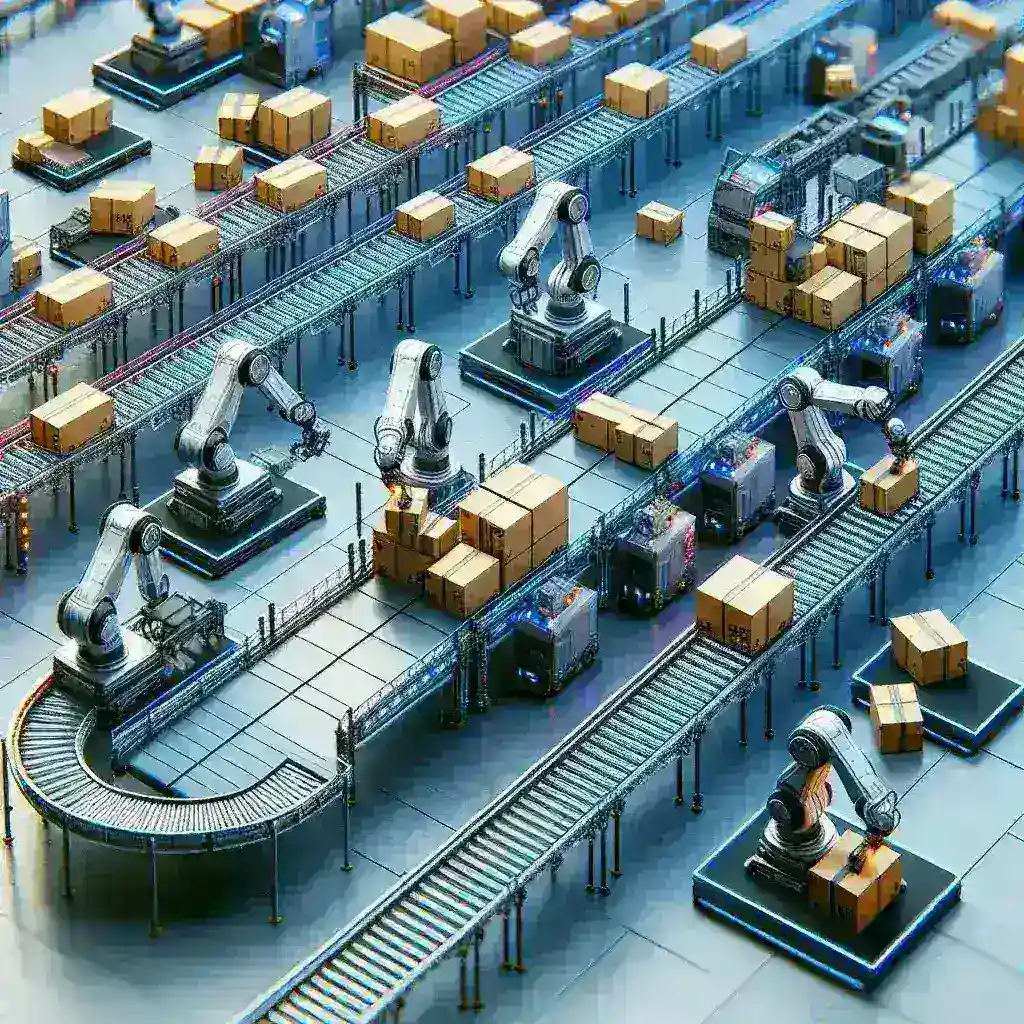Introduction
In the rapidly evolving world of logistics and shipping, innovation plays a crucial role in maintaining efficiency and meeting consumer demands. The latest initiative by UPS, the deployment of AI-powered robotic loaders in U.S. shipping hubs, marks a significant leap in the integration of technology into the supply chain. This article explores the implications, advantages, and future potential of this groundbreaking development.
The Rise of Automation in Logistics
The logistics industry has seen a surge in automation over the past decade. Companies are increasingly seeking ways to enhance their operational efficiency, reduce labor costs, and improve accuracy in their processes. By automating various tasks, businesses can allocate resources more effectively and meet growing consumer expectations.
Historical Context
Historically, the shipping and logistics sector has relied heavily on manual labor. However, with the advent of technologies such as robotics and artificial intelligence, companies began experimenting with automating basic tasks. Early attempts focused on warehouse management systems and simple conveyor belts. Over time, as technology advanced, the potential for sophisticated machines to handle more complex tasks became apparent.
UPS’s Vision for the Future
UPS has long been an industry leader in logistics, consistently pushing the boundaries of technology to improve service delivery. The decision to deploy AI-powered robotic loaders aligns with their vision of leveraging cutting-edge technology to optimize their operations. By integrating robotics into their shipping hubs, UPS aims to streamline loading processes, significantly reduce turnaround times, and enhance overall efficiency.
Understanding AI-Powered Robotic Loaders
AI-powered robotic loaders utilize advanced algorithms and machine learning capabilities to perform tasks that were traditionally executed by human workers. These robots are designed to analyze data in real-time, allowing them to adapt to changing conditions and make decisions on the fly. Here, we delve deeper into how these loaders work and their advantages.
How They Work
- Data Processing: The robotic loaders gather data from various sources, including warehouse management systems and inventory databases.
- Real-Time Adaptability: Using AI algorithms, these machines can adjust their loading strategies based on the current state of the warehouse, optimizing efficiency.
- Navigation: Equipped with sensors and imaging technologies, the loaders can navigate through busy environments, avoiding obstacles while performing their tasks.
- Collaboration: These robots are designed to work alongside human workers, assisting them in loading and unloading packages without replacing them entirely.
Advantages of AI-Powered Loaders
The deployment of robotic loaders by UPS offers several significant advantages:
- Increased Efficiency: Robotic loaders can operate continuously without fatigue, allowing for faster loading and unloading times.
- Cost Reduction: With robots taking over mundane tasks, companies can reduce labor costs and allocate human resources to more critical functions.
- Improved Accuracy: AI algorithms enhance precision in loading, minimizing errors that could lead to shipment delays.
- Enhanced Safety: By reducing the need for human workers to navigate hazardous environments, robotic loaders can help minimize workplace accidents.
Challenges and Considerations
While the benefits of AI-powered robotic loaders are compelling, organizations must also consider potential challenges:
Initial Investment
The cost of deploying advanced robotics can be substantial. Companies must weigh the initial investment against long-term savings and efficiency gains.
Workforce Transition
As automation increases, there may be concerns about job displacement. It is critical for companies like UPS to ensure that their workforce is prepared for this transition, providing necessary training and upskilling opportunities.
Real-World Examples of Success
Several businesses have already successfully integrated robotic loaders into their operations, paving the way for UPS’s latest initiative. For instance, Amazon has utilized robotics in its fulfillment centers for years, achieving remarkable efficiency in its operations. Similarly, companies in manufacturing and automotive sectors have reported significant productivity gains by incorporating robotic systems.
The Future of Robotics in Logistics
The deployment of AI-powered robotic loaders is just the beginning. As technology continues to evolve, the logistics industry can expect even more innovations that will enhance efficiency, accuracy, and safety. Experts predict that in the next decade, we will see:
- Greater Integration of AI: As artificial intelligence becomes more sophisticated, its applications in logistics will expand beyond loading and unloading.
- Increased Collaboration: Future systems may allow for seamless interaction between robots and human workers, creating a more cohesive work environment.
- Global Standardization: As companies like UPS set the bar for automation, others may follow suit, leading to standardized robotics protocols across the industry.
Conclusion
UPS’s deployment of AI-powered robotic loaders in U.S. shipping hubs represents a significant step toward the future of logistics. By embracing automation, UPS aims to enhance efficiency, improve accuracy, and redefine the logistics landscape. Although challenges lie ahead, the potential rewards make this an exciting time for the industry. As companies continue to innovate, the integration of technology into logistics will be crucial in meeting the demands of an ever-changing market.

Leave a Reply